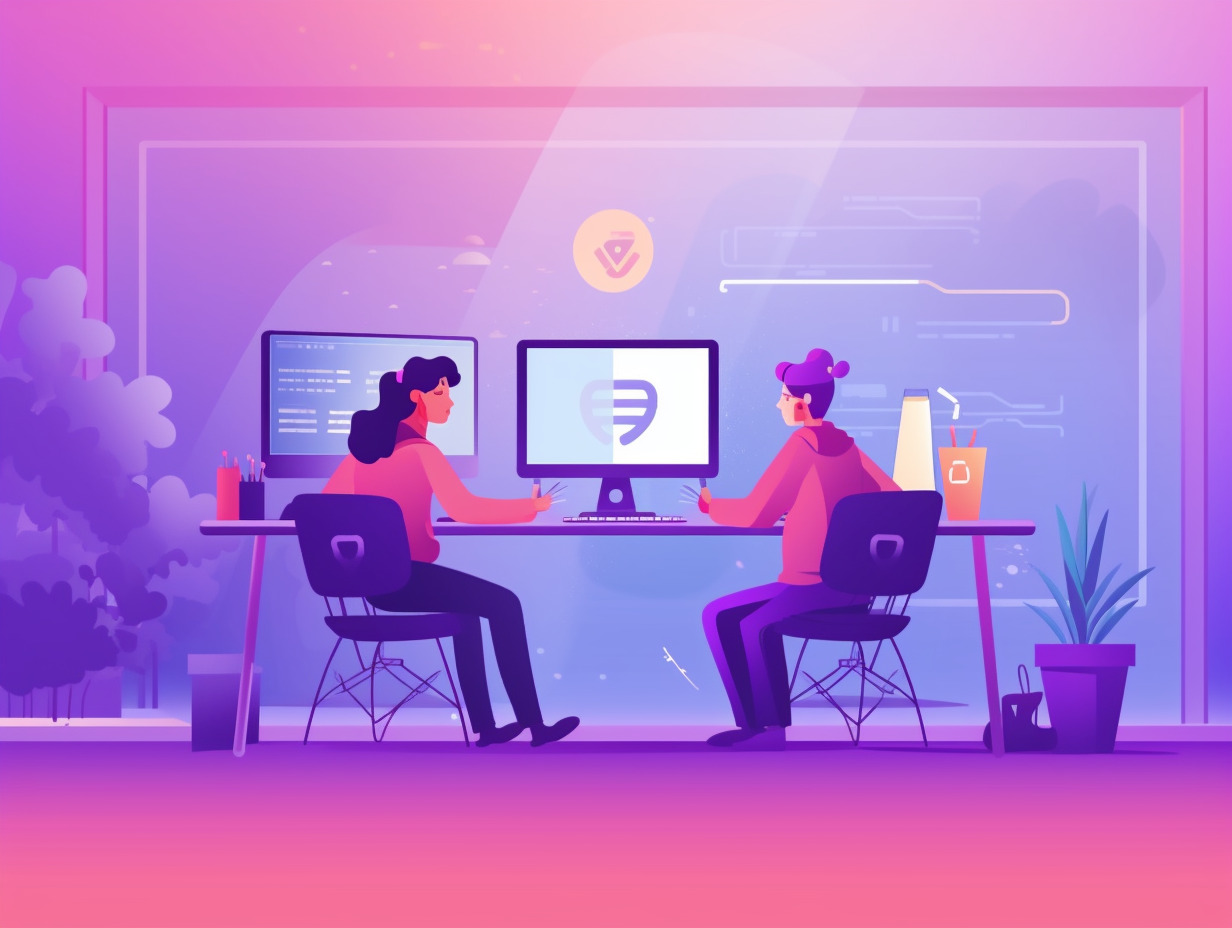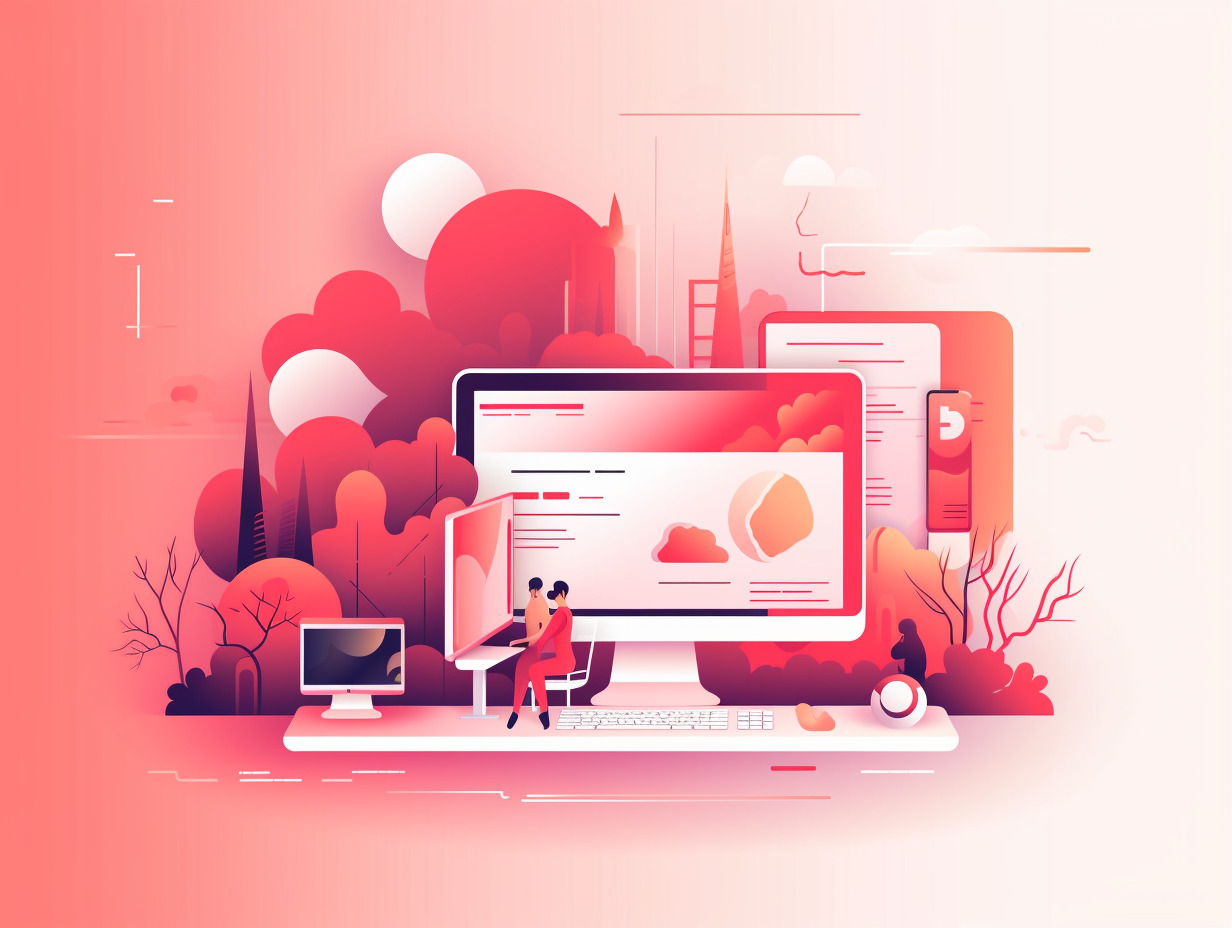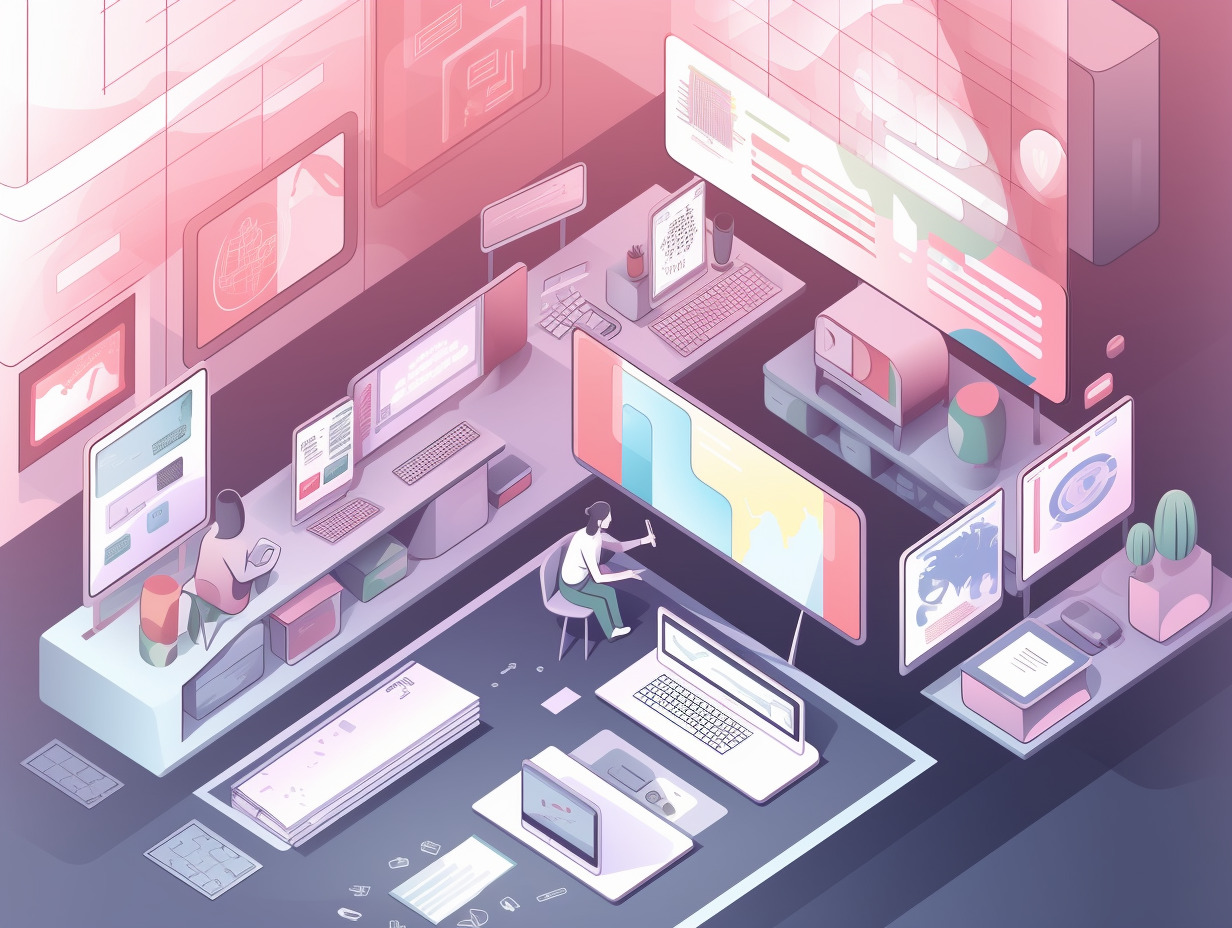
Web designer vs web developer are two distinct yet interconnected jobs that play crucial roles in creating and maintaining websites. Web design involves the artistic and user experience aspects, focusing on visual aesthetics, layouts, and user interaction. On the other hand, web development deals with the technical implementation of websites, including coding, programming, and database management. Understanding the differences between these roles is essential for effective collaboration and successful website projects.
In this article, we will delve into the key points that differentiate web designers from web developers. First, we will explore the specific responsibilities and expertise associated with each role. Next, we will discuss the essential skills and tools that Web Designer vs Web Developer utilize in their work. Then, we will emphasize the significance of collaboration and workflow between these two roles throughout the web development process. Additionally, we will examine the career paths and job market opportunities available for both web designers and web developers. Finally, we will consider the synergies and benefits of having interdisciplinary skills that bridge the gap between Web Designer vs Web Developer. By exploring these points, we aim to provide valuable insights into the distinctions and synergies between Web Designer vs Web Developer.
#1: Role Definitions
Web Designer: Web designers specialize in crafting the visual aesthetics and user experience of a website. They have a keen eye for design principles, focusing on creating appealing layouts and engaging visual elements. Their primary goal is to ensure that the website’s look and feel align with the brand’s identity and provide an intuitive user experience. Web designers are responsible for creating wireframes, which outline the website’s structure, as well as developing layouts and graphics that enhance the overall visual appeal of the site.
Web Developer: Web developers, on the other hand, are primarily concerned with the functionality and technical implementation of a website. They excel in coding and programming, using various languages such as HTML, CSS, and JavaScript to bring the web designer’s vision to life. Web developers work behind the scenes, writing and maintaining the website’s code to ensure it runs smoothly and efficiently. They focus on implementing interactive features, integrating databases, and optimizing the site’s performance for a seamless user experience.
Both web designers and web developers contribute their expertise to create a well-rounded website. While web designers emphasize the visual aspects and user experience, web developers concentrate on the technical aspects and functionality of the site. Their collaborative efforts result in a website that is visually appealing, user-friendly, and fully functional.
#2: Skill Sets
Web Designer: Web designers possess a unique set of skills that revolve around their expertise in visual design and user experience. They are proficient in using graphic design software such as Adobe Photoshop and Illustrator to create visually appealing elements for websites. Additionally, they have a deep understanding of user experience (UX) principles, ensuring that the website is intuitive and easy to navigate. Web designers also possess knowledge of color theory and typography, enabling them to select appropriate color schemes and typography that enhance the overall aesthetic appeal of the site.
Web Developer: Web developers, on the other hand, specialize in programming and technical implementation. They are proficient in programming languages like HTML, CSS, and JavaScript, which form the foundation of web development. With their expertise, web developers can write clean and efficient code that brings functionality to the website. They are also familiar with various frameworks, libraries, and server-side technologies that enhance their development process. This includes using frameworks like React or Angular, utilizing libraries such as jQuery, and understanding server-side technologies like Node.js.
Both web designers and web developers bring their unique skill sets to the table, complementing each other’s work in creating a comprehensive website. While web designers excel in visual design, user experience, and graphic design software, web developers possess programming proficiency and a deep understanding of frameworks and technologies that drive the website’s functionality. Together, their combined skills contribute to the successful development of a visually appealing and fully functional website.

#3: Collaboration and Workflow
Web Designer and Web Developer collaboration: Collaboration between web designers and web developers is crucial for the successful creation of a website. The process begins with the early involvement of web designers in the planning and wireframing stages. By including web designers from the start, their expertise in aesthetics and user experience can shape the overall direction of the project. This collaborative approach ensures that the design and functionality are aligned from the beginning.
Throughout the development process, web designers and developers maintain iterative feedback and communication. They work together closely to address design considerations and technical requirements. Web designers provide input on visual elements, layout adjustments, and user experience enhancements, while web developers offer insights on technical feasibility and implementation strategies. This constant collaboration allows for efficient problem-solving and ensures that the website meets both the design and functional goals.
Overlapping responsibilities and the need for coordination: While web designers and web developers have distinct roles, there are overlapping responsibilities that necessitate coordination. Both parties work in sync to achieve cohesive results. For example, web designers may need to understand the basics of coding to ensure that their design concepts are technically feasible. Similarly, web developers may need to have an understanding of design principles to effectively implement the visual elements.
Collaboration tools such as a Client Portal for web designers play a vital role in streamlining the workflow between web designers and developers. These tools facilitate effective communication, version control, and task management. A Client Portal for web designers like Jira or Asana allow for clear assignment of tasks and progress tracking. Additionally, design collaboration tools like Figma or Adobe XD enable real-time collaboration and feedback exchange, ensuring seamless cooperation between web designers and web developers.
#4: Career Paths and Job Market
Career options and prospects for web designers: Web designers have a range of career opportunities in various sectors. They can find employment in digital agencies, design firms, or even work as freelancers. These roles allow them to collaborate with clients and teams to create visually appealing and user-friendly websites. Additionally, with the increasing importance of responsive web design and mobile experiences, web designers who specialize in these areas are in high demand. As more people access the internet through mobile devices, the need for web designers who can optimize websites for different screen sizes and devices continues to grow.
Career options and prospects for web developers: Web developers also have promising career prospects in diverse industries. They can work in software companies, IT departments of organizations, or choose to freelance. The demand for web developers is driven by the growing need for web applications, e-commerce platforms, and custom solutions. As businesses increasingly rely on digital platforms to connect with their customers and streamline operations, web developers who can build and maintain these applications are highly sought after. Additionally, staying updated with emerging technologies and frameworks further enhances the job prospects for web developers.
Both web designers and web developers have a range of opportunities in the job market. While web designers focus on creating visually appealing and user-friendly designs, web developers bring these designs to life with functional and efficient code. The ever-evolving digital landscape ensures a steady demand for skilled professionals in both fields. By continuously updating their skills and staying abreast of industry trends, web designers and web developers can position themselves for rewarding careers in a competitive job market.
Conclusion
Throughout this article, we have explored the distinct roles and responsibilities of Web Designer vs Web Developer. Web designers focus on the visual aesthetics, user experience, and graphic design aspects of a website, while web developers emphasize functionality, coding, and technical implementation.
It’s essential to understand that Web Designer vs Web Developer have complementary roles that rely on each other’s expertise. While their areas of focus may differ, collaboration and effective communication between these two roles are vital for successful website projects. By recognizing and appreciating the distinct contributions each role brings, teams can work together more effectively, resulting in well-rounded websites that excel in both design and functionality.
For individuals interested in pursuing a career in the web industry, it’s worth considering the potential benefits of exploring both Web Designer vs Web Developer paths. While specializing in one area is valuable, having an understanding of both disciplines can provide a competitive edge. Moreover, finding synergies in interdisciplinary skills can open up unique opportunities and allow professionals to tackle projects from multiple angles. By cultivating a diverse skill set, individuals can adapt to the evolving demands of the industry and pursue versatile career paths.
In conclusion, Web Designer vs Web Developer play crucial roles in creating exceptional websites. Understanding the differences and synergies between these roles is key to fostering effective collaboration and achieving successful outcomes. Whether choosing to specialize in web design or web development, or pursuing a combination of both, the web industry offers exciting opportunities for growth and innovation. By embracing the unique qualities of each role and seeking out interdisciplinary skills, individuals can thrive in this dynamic and ever-expanding field. Don’t forget that a client portal for web designers can help you improve your productivity and move faster towards your goals.
Frequently Asked Questions
What is the primary difference between a web designer and a web developer?
A web designer focuses on the visual aesthetics and user experience of a website, creating layouts, graphics, and overall design elements. In contrast, a web developer is responsible for the technical implementation, including coding, programming, and database management, to ensure the website functions properly.
Which skills are essential for a web designer vs a web developer?
Web designers need skills in graphic design software like Adobe Photoshop and Illustrator, a strong understanding of user experience (UX) principles, and knowledge of color theory and typography. Web developers, on the other hand, must be proficient in programming languages such as HTML, CSS, and JavaScript, and be familiar with frameworks and server-side technologies like React, Angular, and Node.js.
How do web designers and web developers collaborate effectively?
Effective collaboration between web designers and web developers involves early involvement of designers in the planning stages, iterative feedback, and constant communication throughout the development process. Utilizing collaboration tools like Jira, Asana, Figma, or Adobe XD can streamline workflow, enhance communication, and ensure that both design and technical requirements are met.
What career opportunities are available for web designers vs web developers?
Web designers can find opportunities in digital agencies, design firms, or as freelancers, focusing on creating visually appealing and user-friendly websites. Web developers have prospects in software companies, IT departments, and freelance work, building and maintaining web applications and custom solutions. Both fields offer promising career paths with a steady demand for skilled professionals.
Why is it beneficial to understand both web design and web development?
Understanding both web design and web development provides a competitive edge, allowing professionals to tackle projects from multiple angles and foster better collaboration. Having interdisciplinary skills can open unique opportunities, adapt to the evolving demands of the industry, and result in versatile career paths in the dynamic field of web development.
Are you already using a Client Portal? SuperOkay gives you 1 client portal free forever to start creating professional-looking Client Portals, custom branded to your clients’ brands – Start today by clicking here!

How to Find Web Design Clients in 2023
In the vast realm of the internet, learning how to find web design clients is crucial to your success. These clients are the lifeblood of your business, the ones who w…

How to Become a Freelance Web Designer
In today’s digital era, the demand for skilled web designers is skyrocketing. Companies and individuals alike are in constant need of professionals who can creat…

Web Design Trends in 2023
In the ever-evolving world of web design, staying up-to-date with the latest trends is crucial to staying relevant and delivering exceptional user experiences. As tech…

5 Ways To Improve Your Online Presence Today
Learning how to improve online presence is one of the most important elements of marketing your business online. An effective website, optimized content, and targeted …